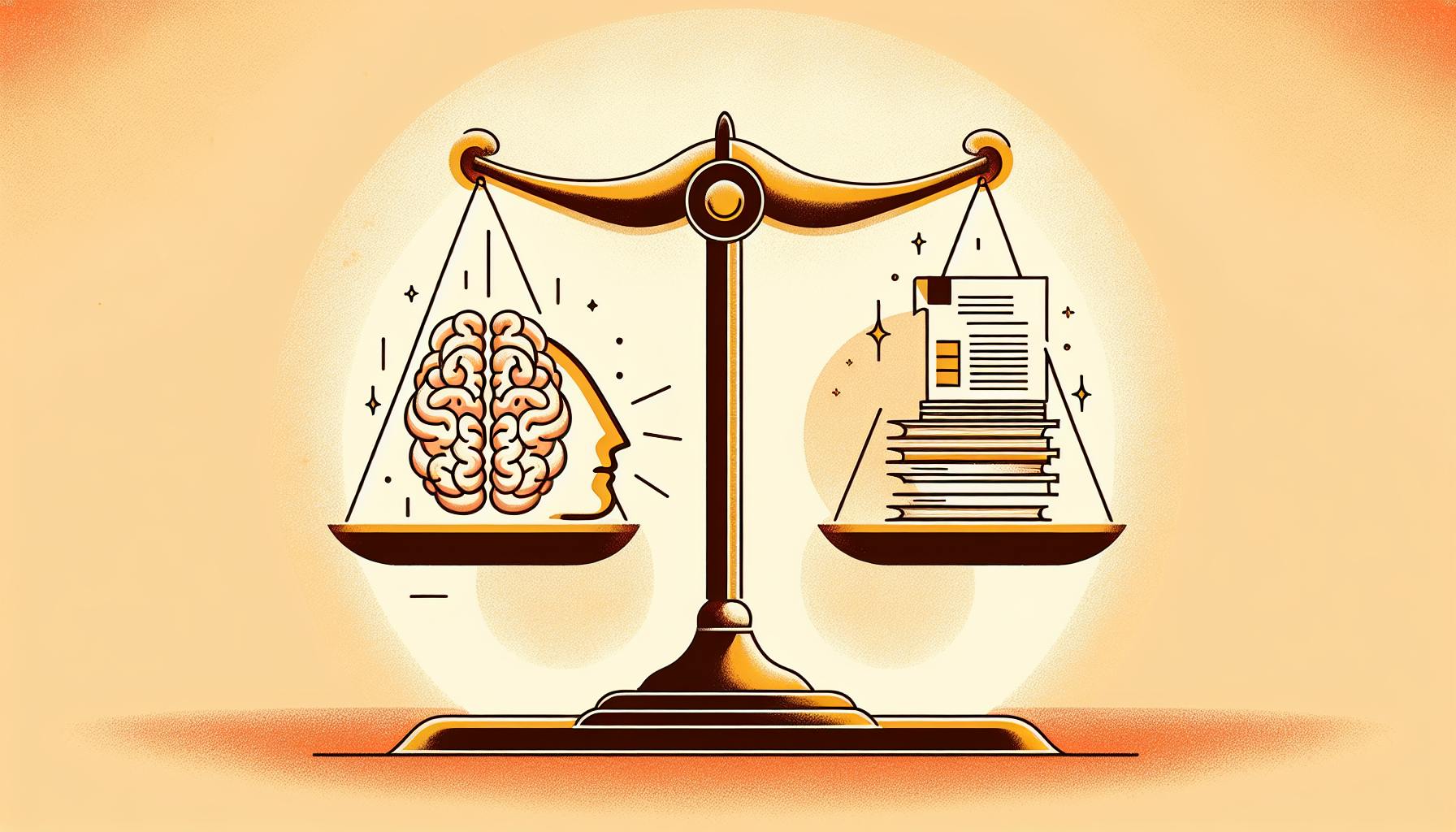Readers would likely agree that insider trading scandals involving celebrities can raise complex legal and ethical issues.
In this article, we will analyze the details surrounding Martha Stewart's insider trading charges, trial, and aftermath to better understand the legal principles and potential consequences involved.
We will examine the connections between Stewart, ImClone, and others that set the foundation for her indictment, summarize the specific federal charges she faced, discuss how her celebrity impacted the highly publicized legal proceedings, and consider the ultimate ramifications on her business empire and public persona.
Martha Stewart's High-Profile Insider Trading Scandal
Martha Stewart was a prominent public figure in the early 2000s, known for her lifestyle brand Martha Stewart Living Omnimedia which included books, magazines, and television shows featuring cooking, gardening, and home decor. In December 2001, Stewart became embroiled in an insider trading scandal involving the biopharmaceutical company ImClone Systems.
Stewart had sold nearly 4,000 shares of ImClone stock one day before the company announced the rejection of its cancer drug Erbitux by the FDA, causing the stock price to plummet. It later emerged that Stewart had likely been tipped off about the FDA news by her stockbroker, Peter Bacanovic, who had also been the broker for ImClone's CEO Samuel Waksal. Waksal himself sold off large amounts of ImClone stock in advance of the announcement.
The high-profile case involving a celebrity like Martha Stewart attracted significant public attention. Stewart was indicted in 2003 on charges including securities fraud and obstruction of justice. In 2004, following a highly publicized jury trial, Stewart was convicted on four counts and sentenced to five months in federal prison plus two years probation.
The scandal tarnished Stewart's wholesome public image and raised questions about preferential treatment for high-profile figures. However, after serving her sentence, Stewart was able to rebuild her brand and continue her successful media career. The ImClone insider trading case remains one of the most prominent examples of securities fraud and abuse of privileged information by a celebrity.
Unraveling the ImClone Scandal: A Summary
Martha Stewart and ImClone Systems: The Ties That Bind
Martha Stewart had close personal ties with ImClone Systems and its CEO Samuel Waksal. She was friends with Waksal for over a decade and held a large position in ImClone stock. As a major shareholder and friend of the CEO, she had an inside look into the company's operations and drug pipeline. This close relationship would end up being central to the insider trading scandal that brought down both Stewart and Waksal.
Peter Bacanovic: The Broker Behind the Trade
Peter Bacanovic was a stockbroker at Merrill Lynch who handled Stewart's portfolio. He worked closely with Stewart for years and executed the trade of ImClone shares on her behalf right before news of the FDA rejection tanked the stock price. Bacanovic claimed Stewart sold due to a pre-existing stop-loss order, but prosecutors alleged he tipped her off about the coming bad news, enabling her to avoid major losses.
Samuel D. Waksal: The CEO's Downfall
As CEO of ImClone Systems, Samuel D. Waksal had advanced information on the company's experimental cancer drug Erbitux. When he found out the FDA was rejecting ImClone's Erbitux application, he immediately told friends and family to sell their ImClone shares before the news went public. This included tipping off his friend Martha Stewart. In addition to securities fraud, Waksal would be convicted on charges of bank fraud, obstruction of justice, and perjury related to selling his own ImClone shares. He served over 5 years in federal prison.
ImClone Stock Plummet: Trigger for the Scandal
On December 28, 2001, the FDA announced its decision to reject ImClone's cancer drug application. The next trading day, the stock shed over 60% of its value. Martha Stewart sold all 3,928 shares of her ImClone stock on December 27, saving herself from losses of about $45,000. The well-timed trade just before the stock cratered raised suspicions of insider trading and prompted an SEC investigation.
The U.S. Securities and Exchange Commission's Involvement
The SEC opened an investigation into Martha Stewart's ImClone trades within months of the stock's plunge. They examined phone records and interviewed both Stewart and Bacanovic multiple times to determine if Stewart had been illegally tipped off. Though Stewart claimed to have an existing agreement to sell if the stock dropped below $60, investigators found evidence the story was fabricated after the fact. The SEC built a case showing Stewart sold because she received nonpublic information from Bacanovic about the impending FDA decision.
Decoding Insider Trading: The Legal Landscape
What is Insider Trading: Legal Clarification
Insider trading refers to the buying or selling of a publicly-traded company's stock by someone who has access to nonpublic information about that company. This could include company executives, directors, employees, or others with knowledge of confidential information that could impact the company's stock price if made public. Insider trading is illegal under the Securities Act of 1933 and the Securities Exchange Act of 1934 when this nonpublic information gives the trader an unfair advantage.
For example, if a company executive knows that their company is about to release a major new product or sign a big contract that will likely increase profits and stock value, they cannot legally trade the stock until that information is made public. Doing so would constitute insider trading. The laws aim to create a level playing field and prevent unfair advantages in the stock market.
SEC Rule 10b-5: The Rule Implicated in Stewart's Case
Martha Stewart was charged with violating SEC Rule 10b-5, among other charges, which prohibits fraud or deceit in connection with the purchase or sale of any security. This rule makes it illegal to trade securities based on material nonpublic information or provide such information to others to trade on.
In Stewart's case, she was accused of receiving a tip from her stockbroker that the CEO of ImClone Systems was trying to sell his stock in the company. This was confidential information that was not yet public. Stewart allegedly sold her shares based on this tip before the information was officially released, avoiding major losses when the stock later plunged. This was considered securities fraud and insider trading under Rule 10b-5.
The Thin Line: Legal vs. Illegal Stock Trading
There can be a fine line between legal and illegal trading around sensitive information. The key factors are:
- Whether the information is nonpublic or confidential
- If the information could substantially impact the stock price if made public (considered "material")
- If the trading provides an unfair advantage by acting on such information before others
Simply selling or buying stock as an insider is not necessarily illegal. But if it is done based on nonpublic information that could swing stock prices, it crosses the line into insider trading. This nuance is why securities laws can be complex. Stewart's case centered on whether she received and acted on a material, nonpublic tip or simply decided independently to sell her stock. Her conviction indicates the jury felt she illegally capitalized on inside information.
sbb-itb-e93bf99
sbb-itb-e93bf99
sbb-itb-e93bf99
The Federal Charges and Trial
Obstruction of Justice and Perjury Charges
Martha Stewart was charged with obstruction of justice and making false statements to federal investigators regarding her sale of ImClone stock shares. Prosecutors alleged that she lied about when she sold the shares and altered phone logs to hide her communication with her broker, Peter Bacanovic. If convicted, she faced up to 20 years in prison.
Conspiracy and Securities Fraud Allegations
Stewart was charged with conspiracy and securities fraud for allegedly coordinating with Bacanovic to sell her ImClone shares based on insider information about the company. Prosecutors claimed Bacanovic, who was also Samuel Waksal's broker, tipped Stewart off that Waksal was trying to sell his ImClone shares. This communication was seen as an illegal tip that led to Stewart avoiding major losses when the stock tanked after news of the rejected Erbitux application went public.
The Jury's Role in the Celebrity Trial
The jury for Stewart's trial underwent extensive questioning to ensure impartiality despite her fame. Their role was significant in determining whether the communication between Stewart and Bacanovic crossed legal boundaries. While the evidence was largely circumstantial without a smoking gun, the jury ultimately felt the timeline of events and subsequent lies pointed to guilty conduct.
Martha Stewart: Convicted Felon
After nearly three weeks of testimony, the jury found Stewart guilty on all counts related to obstruction, conspiracy, and making false statements to investigators. She was sentenced to five months in federal prison followed by two years of supervised release, proving that not even celebrities are above the law when it comes to insider trading.
Wire Fraud Considerations
While Stewart avoided conviction on securities fraud related to the ImClone trades themselves, the wire fraud charges focused on the electronic communication between her and Bacanovic that allegedly conveyed the inside tip. This highlighted how insider trading extends beyond simply executing illegal trades to coordinating them through communication channels like telephone calls.
The Aftermath and Impact on Martha Stewart's Legacy
Sentencing and Federal Prison Time
Martha Stewart was sentenced to serve 5 months in federal prison, followed by 2 years of supervised release including 5 months of electronic monitoring. She was also fined $30,000 and ordered to pay $137,019 in restitution.
Stewart served her prison sentence at the Federal Prison Camp in Alderson, West Virginia from October 2004 to March 2005. While incarcerated, she took on a custodial job, earning 12 cents per hour. She was released 2 weeks early for good behavior.
Martha Stewart Living Omnimedia: Navigating Post-Scandal Turbulence
In the aftermath of Stewart's conviction, her company Martha Stewart Living Omnimedia (MSLO) faced serious struggles. With its brand and stock price tied to its founder's now-tarnished public image, MSLO dealt with falling advertising and circulation revenues. Its stock price plummeted nearly 23% after the verdict.
To stabilize itself, MSLO undertook cost-cutting measures including layoffs and scaling back the magazine publishing schedule. It also focused on expanding merchandising efforts through mass retailers to diversify revenue streams beyond publishing.
Rebuilding a Brand: Martha Stewart's Return
Upon her release from prison in March 2005, Martha Stewart began efforts to rebuild her public persona and brand image. She made her first post-prison TV appearance in September 2005 on her show Martha.
Stewart took accountability for her actions while asserting her innocence regarding insider trading. She highlighted her entrepreneurial accomplishments and community service initiatives. This multi-pronged approach aided her brand's recovery.
By the mid 2000s, MSLO's financial performance and Stewart's popularity had substantially rebounded. Her personal net worth also recovered to over $638 million by 2016.
Long-term Repercussions on the ImClone Scandal
While Martha Stewart was able to rehabilitate her image and brand over time, the insider trading scandal has remained an indelible part of her legacy.
Her conviction served as a high-profile example during a period of increased regulatory scrutiny around corporate fraud in the early 2000s. It highlighted issues regarding securities violations by public figures.
The scandal also impacted co-defendant Peter Bacanovic, who was barred from working in the securities industry and later declared bankruptcy due to legal fees.
So while Stewart rebuilt her empire post-prison, the ImClone scandal and its consequences left a lasting mark on her history.
Key Takeaways from Martha Stewart's Insider Trading Case
Insider Trading: A Cautionary Tale
Martha Stewart's insider trading case underscores the importance of understanding and avoiding insider trading. Her conviction set a precedent that no one is above the law when it comes to financial crimes. It demonstrated that the wealthy and powerful face consequences for insider trading and securities fraud.
The case serves as a lesson that insider trading has serious legal ramifications. Violating securities laws through insider trading or obstruction of justice carries potentially severe penalties. Martha Stewart's sentence included prison time, fines, probation, and restrictions from serving on corporate boards.
Companies and individuals should have clear policies and compliance procedures regarding insider trading. Seeking legal counsel when unsure if trading would constitute insider trading is critical to avoid legal issues down the line. Understanding regulations around financial crimes is essential, even for public figures and corporations. Martha Stewart's conviction brought insider trading into the public spotlight.
Celebrity and Accountability: The Dock as Equalizer
Martha Stewart's trial set a precedent that celebrity status does not excuse white-collar crimes like insider trading. Her case prompted more securities fraud prosecutions against high-profile business people. It demonstrated that justice applies equally to everyday citizens and the rich and famous when laws are broken.
The case showed that jurors weigh evidence over celebrity. It proved no one receives special legal treatment because of fame or public image. Convicting Stewart displayed that judges and juries hold the wealthy accountable to the same laws as the average person. It underscored the need for business compliance and ethical practices, regardless of fame or fortune.
No One is Above the Law: The Celebrity Conviction
When Martha Stewart was indicted, it sent the message that no one is above the law regarding financial crimes. Her conviction for obstruction, conspiracy, and making false statements made it clear that regulations apply equally, despite income or notoriety. It reaffirmed the principle of equal treatment under the law.
The trial dispelled the perception that the wealthy and powerful get away with white-collar offenses. Stewart's sentencing proved that justice prevails over celebrity in financial criminal cases. It demonstrated that high-profile status does not enable exemption from penalties for violating securities laws. Her conviction set a tone of accountability for public figures and corporations when rules are broken.
Martha Stewart's insider trading case remains an iconic example that securities fraud regulations apply to everyone. Regardless of fame, fortune, or social standing, the outcome sent the unequivocal message that no individual is above the law. When ethical or legal lines are crossed, equal treatment and punishment under the justice system prevails.


